In the early 1930s, France adopted a new standard pistol and a new cartridge to go with it – the MAS 1935 and the 7.65x20mm, closely patterned on the us M1918 Pedersen Device cartridge. They were well acquainted with the 9×19, but as always the French military marched to the slightly offbeat tempo of it’s own drummer. So with the new pistol cartridge in hand, they started testing submachine gun designs. The arsenal at St Etienne provided the best candidate in 1934, and after several years of testing and improvements, it was adopted as the M1938.
Production began in 1939, and very few had gotten into service when German forces overran the factory in 1940. Production continued after the war, but it wasn’t long before the French switched over to the 9mm Parabellum, and the MAT-49 replaced the MAS-38. The MAS did see some use in Indochina, and was used to equip police forces and other secondary units.
One element that is not necessarily apparent from photographs is just how compact the MAS-38 really is. The whole gun is just a hair over 24 inches long, and the barrel is a scant 8.7 inches. The receiver is narrow, and there are very few projections to snag on anything. (even the rear sight folds flush into the top of the receiver). The whole thing weighs in at about 6.5 pounds. That would make for controllability issues with many subguns, but the mild recoil from the rather weak 7.65×20 cartridge allows the gun to be pretty easy to handle. Of course, it lacks stopping power compared to just about any other subgun on the battlefield.
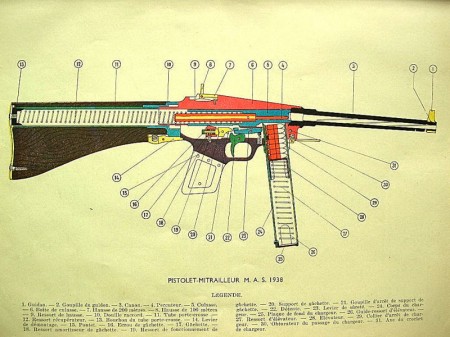
Mechanically, the MAS-38 is a simple blowback action, firing full-auto only from an open bolt. The unorthodox element to its design is how the barrel and bolt travel are not parallel – the bolt travels downwards as it goes back, relative to the barrel. The breechface is cut at a matching angle to fit fully against the chamber mouth. This angle is partly to slow down the bolt (and thus the rate of fire) and partly an attempt to reduce felt recoil by using vertical travel of the bolt to compensate for it (this was also done on the Finnish Jatimatic and modern Kriss carbine to a more extreme degree).
The bolt handle is non-reciprocating, and stays in the rearward position once the gun is charged. It can be manually pushed forward and will latch in the fully forward position, acting as a dust cover over the ejection port. Another folding dust cover is pinned to the front of the magazine well for closing off that opening when no mag is in use. There is no selector switch since the action is full-auto only, and the manual safety is actually built into the trigger. When pushed forward, the trigger will snap into a more or less horizontal position, and in the process lock the bolt in place (whether it is forward or back). You can see how this mechanism works by looking at parts 22 and 23 in the diagram above.
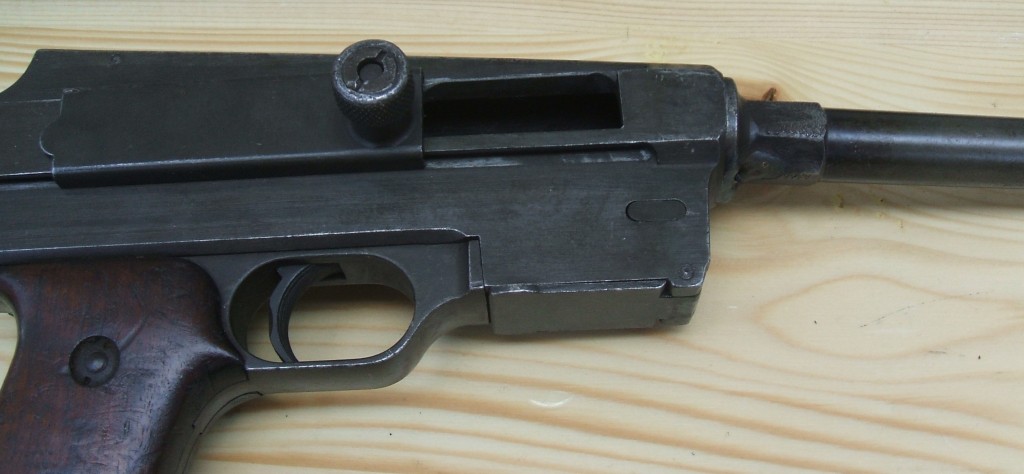
The sights on the MAS-38 consist of a triangular front post and a pair of independent flip-up apertures for the rear sight. The apertures are set for 100m and 200m, and the sights are offset slightly to the left side of the gun. The magazines have a 32-round capacity, and are of the double-feed design.
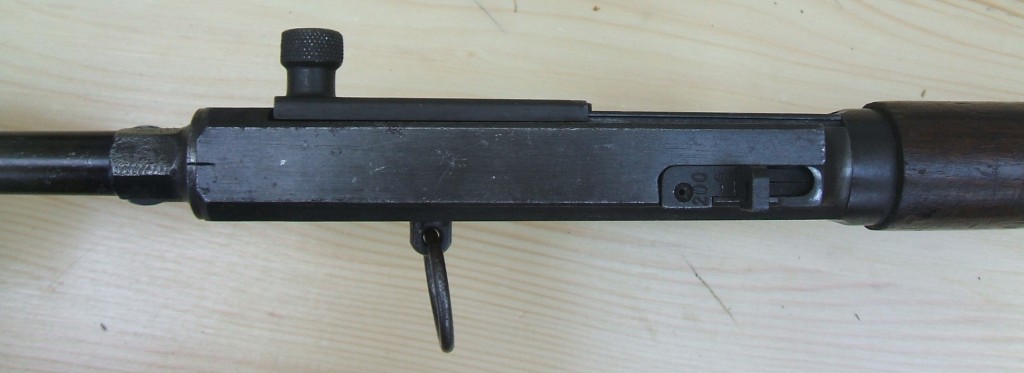
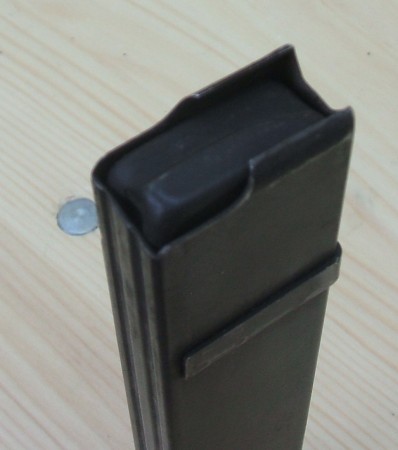
Despite begin a pretty simple mechanism, the MAS38 is not a really simple weapon to manufacture. Its bolt is round in profile despite the square receiver, and runs in a round channel bored in the receiver. This channel also houses the recoil spring, and runs back into the wooden stock (and for this reason a folding-stock model was not made). Other than small pieces like the ejection port cover, the MAS38 was made with all missed steel components. As World War II would soon prove, subguns could be made much faster and at less cost by using mostly stampings.
Disassembly, however, is very straightforward. Depress a spring-loaded catch under the front of the buttstock, and rotate it 90 degrees. The stock will then slide off the receiver, allowing the recoil spring and bolt out. The trigger frame can then slide out the back of the receiver (it runs in a pair of slots inside the receiver).
Photos
You can see the rest of our photos here (please note that this particular example has been deactivated, which required welding the barrel on and cutting the boltface at a 45 degree angle): MAS38 photos as high-res zip archive
Videos
We haven’t had the chance to fire a MAS38 ourselves (yet), but we did find these short clips from American Rifleman TV:
Manuals
We also have a manual for the MAS-38 (specifically, a parts identification list, in French):
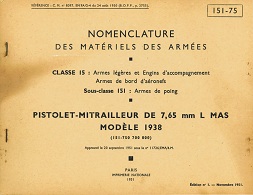

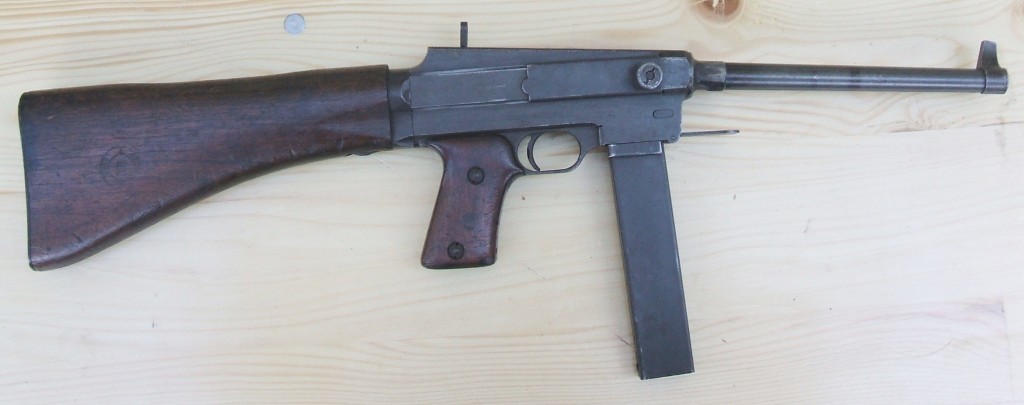



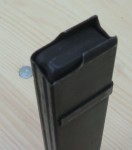





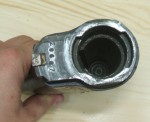





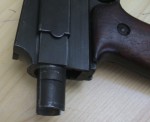




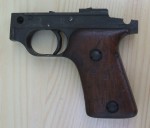
There is little difference when it comes to so-called knock down power, in pistol caliber. What matters is penetration and where it hits.
A question, do you know if there are any blueprints available for this gun. I have evil thoughts of creating a non-gun for WW2 French reenactors and this would be a fun project. A bit insane, but fun. Of course, I would chamber that for 32 ACP, I am after all not a total masochist.
I do hope that you find some good ammo for your’s, I know the feeling that you have been experiencing of pulling the trigger and getting not quite what you expect.